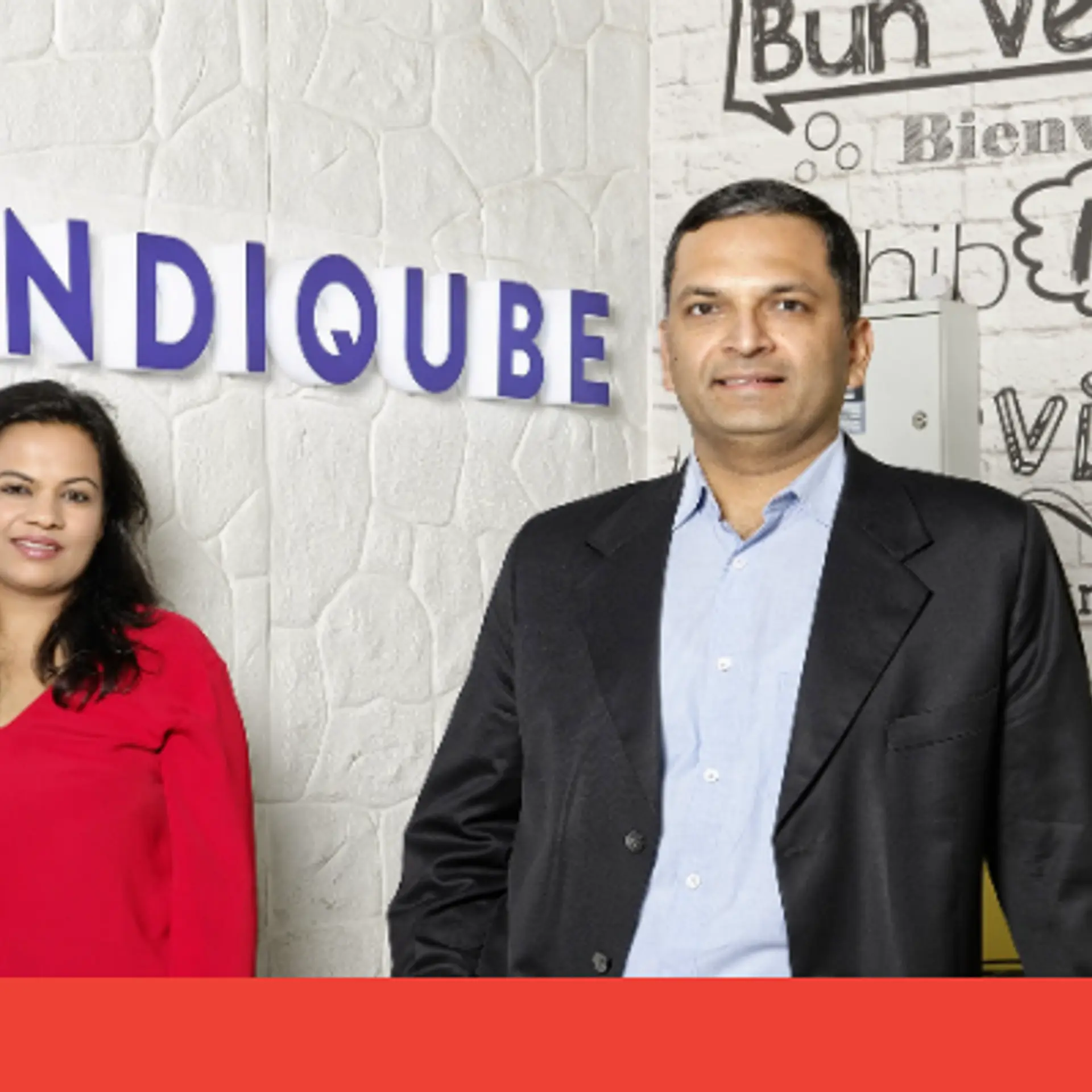[2020 Outlook] The top trends that will shape the future of Indian small businesses
The small business and MSME sector will play a critical role in achieving India’s goal of becoming a $5 trillion economy by 2025. Read on to find out the top industry trends in 2020 that will impact a sector employing over 100 million people and accounting for 45 percent of manufacturing output.

In Bengaluru, Sumit Agarwal’s father and brothers spent weekends tallying paper bills and accounting books. It took them months to realise some of their small business’ transactions had resulted in losses.
Sumit saw helping small businesses maintain their accounts digitally through a simple, mobile application as a big business opportunity. The software engineer built Vyapar, a simple business accounting and inventory management application for small businesses, in 2016.

Sumit Agarwal, Co-founder and CEO, Vyapar
He said Vyapar is now a one million-strong community of MSMEs and small businesses, and once they make the transition to Vyapar, they can't imagine going back to pen and paper. Sumit’s subscription-based business has reached Rs 3 crore annual revenue.
The business opportunity Sumit identified stands to be one of the biggest trends for small businesses in 2020. Traditional businesses are going to increasingly adopt digital payments and accounting solutions. Vyapar is an early mover to capitalise on this trend, but another startups are in close pursuit.
One year after Vyapar, in a different part of Bengaluru, three entrepreneurs stumbled upon a similar idea.
Harsh Pokharna, Gaurav Kumar, and Aditya Prasad saw, through their interactions with daily grocery stores, that most of the accounting and credit given by these shopkeepers was recorded on paper - small pieces that could easily be misplaced.
This is what led them starting digital-based credit balance recording solution OkCredit for small business owners later that year. The trio sat with the owner of Food Choice, a local department store, to understand the challenges and build the OkCredit app.

Founders of OkCredit (L to R): Harsh Pokharna, Gaurav Kumar and Aditya Prasad
Seven million merchants and small businesses joined OkCredit in just two years. The startup claims to be witnessing nearly four million monthly active sessions on the app in the recent months.
Roughly a year later, it happened again in Bengaluru.
Serial entrepreneur Ravish Naresh, who co-founded real estate search portal Housing.com and AI-powered SMS Inbox Kyte, came across developer Vaibhav Kalpe’s business accounting app.
Vaibhav had built the app after seeing his father face challenges in recording his electrical shop’s receivables. Naresh acqui-hired Vaibhav and his team, and launched KhataBook, an app that leverages the trend of increased smartphone use in merchants by becoming the first business accounting software they've used.

KhataBook team
KhataBook claims to have helped over five million merchants save over 600 working hours in a year, each. It adds that their UPI-based payment platform is doubling month on month.
Vyapar, OkCredit, and KhataBook are capitalising on the trend that small businesses will go digital. Sampad Swain, Co-founder and CEO, Instamojo shares this view. He notes that desktops and laptops ruled the roost all these years because small businesses invest in them when starting up, but now, increased mobile penetration and easy access to various digital tools on apps will “make mobile the next game changer for MSME evolution”.

Sampad Swain, CEO and Co-founder, Instamojo
Investments in digital-first
Investors have taken notice of the digital transformation in small businesses. In 2019 alone, Vyapar raised around $5.4 million from B2B ecommerce firm IndiaMART, OkCredit raised around $84 million from Lightspeed India Partners, Tiger Global Management, Y Combinator, Venture Highway, Morningside Venture Capital, Venture Highway, and KhataBook raised around $25 million from Partners of DST Global, GGV Capital, Sequoia India, Tencent and others.
Fintech companies are also excited.
Ajay Adiseshann, Founder and CEO, PayMate, a B2B cloud-based payment solutions provider, said, “In 2020, we are going to see enhanced digitisation of accounts payables and receivables for small businesses. These digital experiences are far superior to what their banks offer, and, over time, they will move to entirely to these platforms and use their bank accounts only as a funding source.”

Ajay Adiseshann, Founder & CEO, PayMate India
By using digital platforms, small businesses and SMEs themselves are in a better position to access credit, manage their cash flows, and provide end-to-end reconciliation, which further helps in bookkeeping and accounts, according to him.
On the back of such digitisation of business financials and the transparency it brings, increased lending in the MSME space is anticipated in 2020.
“One of the key trends for 2020 will be the increase in fintech lending in MSME space since a majority of small businesses do not have access to formal and low-cost credit in India. As they work to increase the digital footprint of their businesses, it will enable lenders (including banks, NBFCs and other fintech players) to leverage this data and drive the lending market,” said Noopur Chaturvedi, Country Head, SMB, PayU, a Netherlands-based fintech company.
Noopur’s sentiment is corroborated by a March 2019 report by popular credit bureau TransUnion CIBIL and development financial institution Small Industries Development Bank of India (SIDBI) which found that MSME lending intensity has not only grown in the past five years but also might grow further.
The report attributes possible growth to the structural strength of the MSME lending segment and the tailwinds of the growing, large corporate sector with declining NPA rates.
“While PSB’s market share in this segment has been shrinking, digitisation initiatives in these banks and few more banks probably coming out of the PCA [Prompt Corrective Action] framework, we may witness PSB’s lending expansion in the MSME segment further fuelling growth in this segment,” it said.
Digital tools and software
Digital bookkeeping and raising funds are not the only ways small businesses can improve their financial health in 2020. SMEs are expected to follow in the footsteps of larger businesses by adopting digital tools and software to streamline operations.
“Small business enterprises are strong contributors in reaching the masses and, for that, they should incorporate tools like digital marketing, supply chain management and Enterprise Resource Planning (ERP) to strengthen their processes and planning, reduce expenses and become profit-oriented,” said Kiran Dham, CEO, Globus Infocom, an edtech and digital signage solutions provider.
As small businesses start to manage their operations better on a real-time basis through adopting ERP software, companies like Marg ERP will benefit. Marg started its journey way back in 1992 - a time when global research and advisory firm Gartner had just coined the term ‘ERP’.

Mahender Singh, Director (left), Sudhir Singh, MD (centre), and Anup Singh, Chairman & MD at Marg ERP
Marg, which was founded by three technocrats under a tree in Ashok Vihar, Delhi, has over the years flourished into a global technology solution provider. It claims over one million active users and 250,000 MSMEs, including the FMCG sector, spread across 707 districts and over 25 countries.
Marg ERP continues to bet big on small businesses and MSMEs. “One of the prominent emerging trends driving the ERP market growth is the demand for seamless integration—across several applications and platforms. B2B payment for SMEs is going to be the biggest trend in 2020. Digitisation helps SMEs in making B2B payments through ERP to dealers etc. B2B payments itself is a billion-dollar opportunity in the SME segment,” said Thakur Anup Singh, CMD, Marg ERP.
However, the willingness of an entrepreneur to try adopting digital tools like ERP could be limited by his/her age, said Lionel Charles, Founder and CEO of IndiaFilings, a cloud-based business services platform.
“Young entrepreneurs are able to quickly understand concepts like eInvoices, UPI payments, payment gateways, digital advertising, etc. However, some of the older generation businessmen struggle with new-age concepts. Anything which you do not understand or comprehend leads to fear and avoidance,” he said.
He argues that one solution could be training and upskilling businessmen from older generations. “In most workplaces, professional organisations and tech companies, continuous skill development and training is mandatory. In the case of entrepreneurs, most have time constraints and there are also very limited structured training and skill development courses available,” he explained.
Being an older entrepreneur isn’t inherently disadvantageous. Research by Harvard Business Review seemed to debunk the youth-only mantra for entrepreneurial success through a 2018 report that revealed the “average age of a successful startup founder is 45”.
It added that the older you get, the higher the success rate, and that evidence points to entrepreneurial performance rising sharply with age before cresting in the late fifties.
Shared spaces
Established companies are also showing they can be young at heart. They are increasingly adopting coworking services which are largely associated with startups, millennial and gig culture.
Over 13 million people are anticipated to be working out of coworking centres by 2020. Several corporates are expected to allocate 10 percent of their office portfolio to agile workspaces.
Spurred by demand from businesses of all sizes, SMEs involved in providing coworking spaces are expected to provide a more wholesome and well-rounded experience to customers to maximise the value of their services.
“Small businesses can benefit from the community and networking facilities provided by coworking spaces. Workspaces will facilitate them to meet and interact with the right professionals in order to support their business needs and grow,” said Gurbinder Rattha, Founder and MD of Workafella, a Chennai-based coworking space provider with 9,000 coworking seats in Chennai, Hyderabad, Bengaluru, and Mumbai.

Gurbinder Rattha, Founder and MD, Workafella
“Evolving technology will also support small businesses in their growth, and co-working spaces, with their flexible nature can provide a centre to the new structure of work organisations,” he added.
Further, the demand for coworking spaces is pouring in not only from larger cities but also from Tier II cities like Chandigarh, Ahmedabad, Kochi, Indore, and Jaipur. There are over 179 coworking spaces across Tier II and III cities, according to YourStory Research.
The spectacular downfall of US-based WeWork co-founder and ex-CEO Adam Neumann has not dampened the spirits of small and medium-sized coworking space providers.
Neumann's thirst for rapid expansion and high valuations has arguably served as a guide on what not to do for existing and budding small-time real estate and coworking space entrepreneurs.
The swelling demand for shared space is also seen in the coliving segment. Small businesses in this segment, such as Bengaluru-based Guesture, are ready to tap into the large migratory workforce and students migrating from tier 2 and tier 3 cities and small towns.

Pramod Kumar, Director, Guesture
“These people are going to be the largest consumer base who seek coliving services. This co-living segment is expected to offer a business opportunity of Rs 1 lakh crore by 2023, according to a joint report by JLL and FICCI.
In a June 2019 statement, JLL India said, "The rising demand for shared renting will propel the market and offer a business opportunity of Rs 1 trillion by 2023 along with a capacity of 5.7 million beds from the previous levels of Rs 458 billion and 3.6 million beds in 2018."
“As cities continue to accommodate a growing migratory populace, players in the co-living/ purpose-built-housing space see a huge potential to leverage this. In fact, for many real estate builders who are stressed due to the on-going real-estate slump, this is a great business opportunity,” said Guesture’s Founder and CEO, Sriram Chutturi.
Local manufacturing and import substitution
Perhaps one of the biggest business opportunities for small businesses in 2020 lies in a sector already familiar to most: manufacturing. It is well-known that small businesses and MSMEs are significant contributors to an economy targeting $5 trillion by 2025.
The MSME segment in India employs over 100 million people and accounts for 45 percent of manufacturing output and more than 40 percent of the country’s exports.
Union Minister for MSME Nitin Gadkari has frequently said in 2019 that his mission was to raise the contribution of MSME sector to the country's GDP to 50 percent from the present 29 percent.

Union Minister for MSME Nitin Gadkari
In 2020, the government is expected to push up the number of MSMEs in India on a sustainable basis through various schemes and programmes. To do this, Gadkari said the MSME Ministry will provide better credit facility, technology upgradation, and skilling to boost the entire MSME ecosystem in India.
Import substitution will be a major focus area. Gadkari said the government was ready to come out with special policies to promote import-substitute products. In this context, Gadkari said, "There are a lot of products made by MSMEs. My suggestion is to identify import-substitute products and then, we can make special policies. This will reduce imports.”
This is in keeping with his announcement that the MSME Ministry will work alongside the Ministry of Commerce and Industry in looking at the possibility for MSMEs to locally manufacture goods which are currently being imported by India.
However, this optimism comes at a time when job cuts, hiring freezes, factory shutdowns, and suspension of production are making headlines, and the GDP growth rate of the economy slipped to five percent for the first quarter of 2019-20, the lowest in over six years.
Automobile companies Maruti Suzuki and Ashok Leyland have been forced to cut down production due to lack of demand, and this has adversely affected ancillary industries, such as component manufacturers, which are often small businesses and suppliers.
Navin Honagudi, Partner at Kae Capital, said, “One of the factors for the auto market slowdown is the rise of shared economy that is generally provided by startups. So, there are two cases here - traditional economy is slowing down, and shared economy is getting bigger.”
Besides the slowdown, the effect of implementation of GST, demonetisation, and digital payments is still felt among small businesses.
However, a few players in the jewellery segment retain hope. They see potential in capitalising on the slowing down of other sectors.
“Although the Indian jewellery market has been impacted by a liquidity crunch, the current market scenario shows that equity markets and real estate are not able to garner the returns expected. This will give momentum to the jewellery sector. Consumers are now looking at jewellery as an investment option,” said Gautam Singhvi, Co-founder and Managing Director, The Diamond Factory, a Mumbai-based jewellery brand.

Gautam Singhvi and Prasanna Shetty, cofounders and Managing Directors, The Diamond Factory
Despite the slowdown, Jaipur-based jeweller TALISMAN expects fashion jewellery to sell and become an independent segment. “We witnessed other fashion brands reinvent fashion with their fast-fashion business model, and the jewellery industry is undergoing a similar transformation. Customers want a new piece that is luxurious, but they want a new one every week,” said the brand’s founder and CEO, Rishabh Kothari.
In 2020, it will be paramount for small business in not only the jewellery segment but also all other sectors to play their cards right as competition gets more intense and consolidation more common.
Small businesses have the potential to emerge triumphant from the economic slowdown in 2020, and the mission to become a $5 trillion economy could lie in their hands.
(Edited by Teja Lele Desai)


![[2020 Outlook] The top trends that will shape the future of Indian small businesses](https://images.yourstory.com/cs/21/98e25df018b511e988ceff9061f4e5e7/finalIndiansmallbusinessestoptrends011575994355978png?mode=crop&crop=faces&ar=2%3A1&format=auto&w=1920&q=75)
![[Year in Review 2019] Make in India: These 15 Indian brands are taking the world by storm](https://images.yourstory.com/cs/21/98e25df018b511e988ceff9061f4e5e7/Top15brands021575970631696png?fm=png&auto=format&h=100&w=100&crop=entropy&fit=crop)





